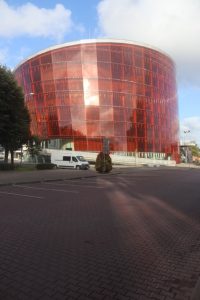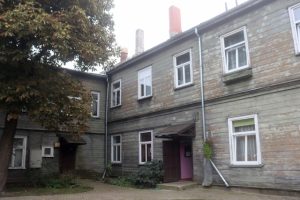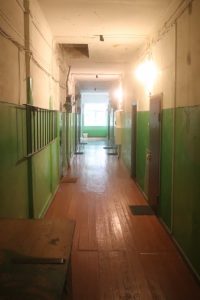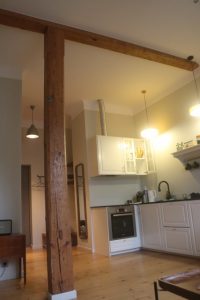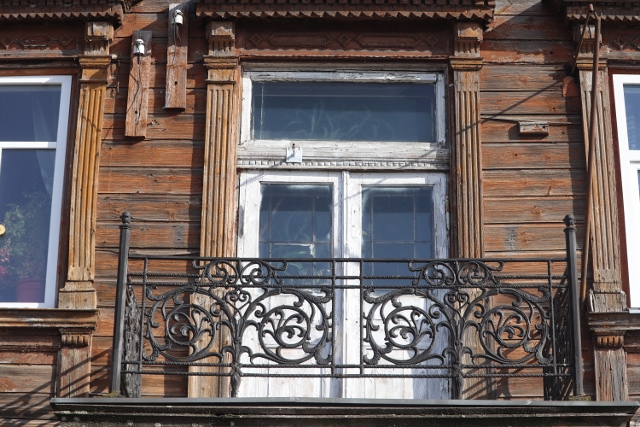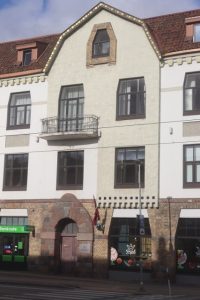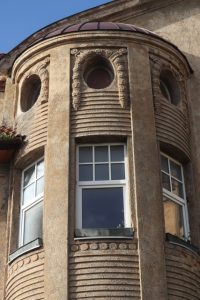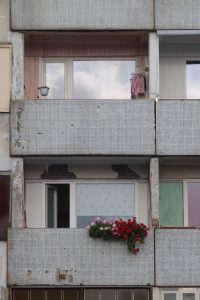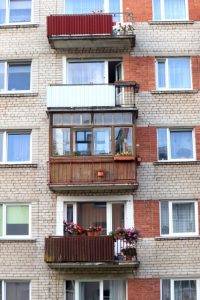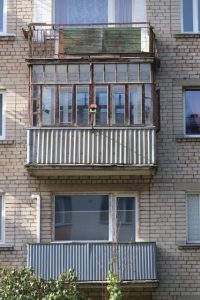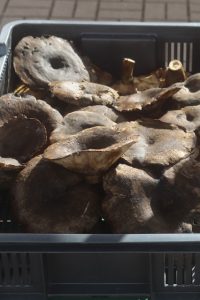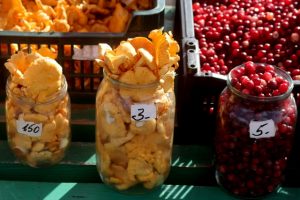Liepaja was not in the plan, but our Latvian friend suggested we go here (and I do listen to others, occasionally). And we didn’t regret it. For starters, I have been going on about wooden houses for a while now, and guess what? The apartment we booked in Liepaja was in one of those wooden houses. Brilliant experience, a comfortable modern-fitted apartment, reached by rickety wooden stairs and a dark corridor, shared with other apartments. A bit like our palati (see below) stay in Tajikistan, some time ago.
We spent the morning wandering through Liepaja. From our own neighbourhood, full of the now familiar wooden houses, we reached the boulevards in the centre, lined with Art Nouveau, once again. Not as ostentatious, mostly, as in Riga, and therefor perhaps even more to my liking. But other styles are also common, some great red-brick buildings, further wooden buildings, mostly houses, and a fabulous modern concert hall.
And in the outskirts? Yes, finally, there they are, the unreconstructed palatis from the Soviet era – ‘palatis’ is an Albanian term that has entered out vocabulary, and relates to cheap four- or five-story apartment buildings, thus no need for a lift, of which the apartments are so small that many home owners have, at their own initiative, closed the balcony to create an extra room. I have photos from palatis in many ex-Soviet republics, and in Eastern European countries, and now from the Baltics, too – just in time, as many of those have already been refurbished, and look a lot better now (although less photogenic).
Just before we leave we end up at the market, another colourful happening thanks to the vegetables, the berries, the mushrooms and the flowers. This is a country that enjoys flowers, it seems, much more so than what we saw in Estonia and in Finland.
Next: the Curonian Spit.
